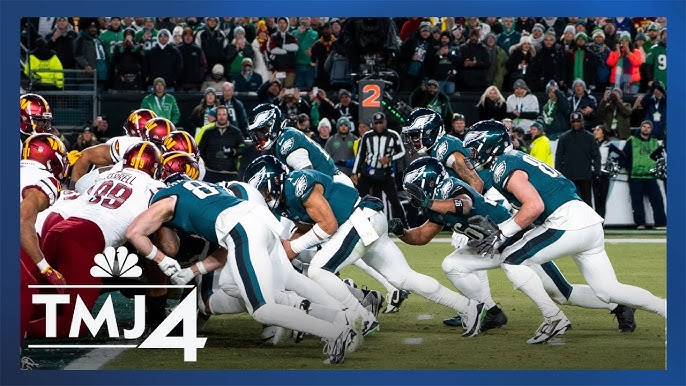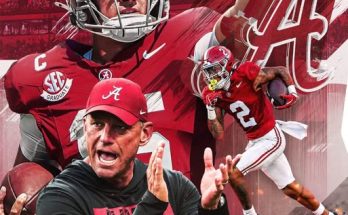As the NFL League meeting begins, a possible ban on tush pushes is being discussed.
The NFL league meetings have always served as a pivotal moment for shaping the future of the game, and this year’s discussions have once again placed a strong emphasis on player safety, competitive balance, and rule modifications. Among the key topics of debate at the latest meetings was the ongoing conversation about tweaking kickoff rules and the potential ban of the controversial “tush push” play, a strategy that has sparked intense debate among league officials, coaches, and fans alike.
The “tush push”—popularized by the Philadelphia Eagles—has been a dominant short-yardage play, particularly on quarterback sneaks. The tactic involves offensive linemen and other players pushing the quarterback forward to gain crucial yards, often making it nearly unstoppable in fourth-and-short or goal-line situations. While the play is legal under current rules, its effectiveness and the potential for increased injury risk have led to calls for reconsideration.
The NFL’s Competition Committee has been closely monitoring the impact of the “tush push,” gathering data on injury rates, competitive fairness, and the play’s overall influence on the game. Opponents of the play argue that it undermines the traditional balance between offense and defense, creating an unfair advantage that disrupts the integrity of the sport. Additionally, concerns have been raised about the safety risks associated with multiple players forcefully pushing forward in a condensed area, leading to increased strain on joints and a higher likelihood of lower-body injuries.
On the other hand, proponents of the play—including many within the Eagles organization—argue that the “tush push” is simply a strategic use of existing rules and an evolution of offensive tactics. They contend that banning the play would be an overreach and that defenses should focus on counteracting it rather than lobbying for its removal. Philadelphia’s success with the play has also sparked imitation across the league, with several teams experimenting with their own variations in an attempt to replicate its effectiveness.
As the league meeting gets underway, team owners, coaches, and officials are engaging in detailed discussions about whether to implement a ban or introduce modifications to the play. One possible compromise under consideration is limiting the number of players allowed to assist in a quarterback sneak, reducing the sheer force being applied while still allowing for strategic execution. Another proposal involves redefining what constitutes an illegal push versus a legal assist, providing clearer guidelines for officials when making in-game rulings.
Beyond the “tush push” debate, the meetings also continue to address other pressing rule changes, including potential tweaks to kickoff formations, roughing the passer penalties, and replay review procedures. The NFL’s ongoing efforts to balance tradition with innovation remain at the forefront, ensuring that changes benefit both player safety and the overall entertainment value of the game.
While the fate of the “tush push” remains undecided, it is evident that the discussion surrounding it has significant implications for the future of offensive strategy in the NFL. Should the league move to ban or limit the play, teams will need to adjust their short-yardage game plans accordingly. If it remains legal, defenses will have to develop more effective countermeasures to prevent its continued dominance.
In the coming weeks, the Competition Committee will present its findings and recommendations, and team owners will have the opportunity to vote on any proposed rule changes. Regardless of the outcome, the debate over the “tush push” highlights the ongoing evolution of the NFL and the challenges that come with balancing innovation, fairness, and player safety in the modern era of football.



